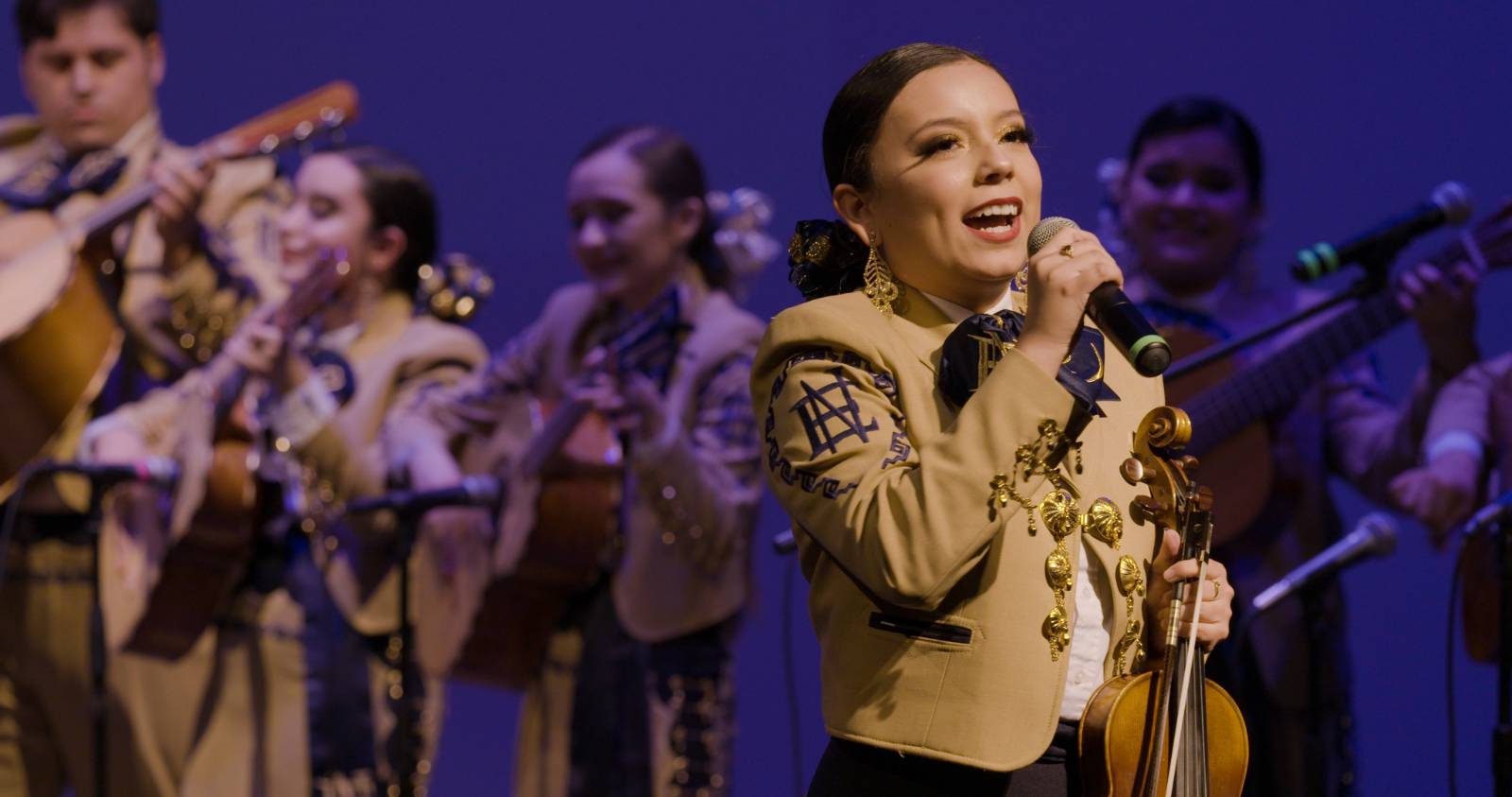“To make a dream come true, the first requirement is a great capacity to dream; the second is persistence.” This quote from civil rights activist Cesar Chavez embodies the protagonists’ goals and motivations in Alejandra Vasquez and Sam Osborn’s Going Varsity in Mariachi. Though audiences witness the statement only during a quick B-roll shot in the opening minutes, its subtle, bold presence encapsulates the American dream and U.S. immigrant experience in a snapshot.
This year’s Jonathan Oppenheim Editing Award recipient explores the world of competitive mariachi in Texas’s high school system through the lens of the 2021-22 Edinburg North High School campaign, located in the Rio Grande Valley near the United States-Mexico border. The wise-and-fun band director Abel Acuña has led the mariachi band program to be one of the state’s highest-ranked division leaders in each of his 11 years. Yet, despite the accomplishment, the school does not have resources and budget to compete against their highly skilled rivals, Roma and La Joya.
The film’s structure resembles a sports movie that utilizes the trope of a reigning champion facing adversity in their journey to defend their title. Edinburg North is rehearsing in-person for the first time amidst COVID-19 and dealing with roster changes like incoming first-year students and graduating seniors. They also need to fundraise to perform in competitions not significant to those outside the band’s faculty and roster. Still, they feature the earliest glimpse of their adversaries en route to the state championship.
As students juggle their personal lives and educational obligations, the participants share their passion for mariachi and what the artistic mode means for them through observational moments with family members as well as candid bedroom interviews that remind audiences the students are still teenagers imagining their uncertain futures. The characters’ outlooks revolve around mariachi, and the film uses their personal stories––Acuña meeting his spouse at a mariachi event, violinist Abby being taught by her sister and fellow alum, and armonia player Marlena expressing her love to her classmate Mariah––to eloquently show why life wouldn’t be the same without music.
But the film’s chronological timeline of the school year establishes clear expectations for its trajectory, which might be unappealing to those not intrigued by the genre. The placement of competition performances could also be more coherent––their results are mainly constant wins, and the first and final shows don’t reflect the participant’s ebbs and flow in their personal lives. Nevertheless, Going Varsity in Mariachi‘s message of maintaining your passion, and its captivating scenes used to convey this, will likely attract a broader audience. The storylines of Abby attempting to receive college scholarships, guitarrón player Drake prioritizing his commitment to the band, and Mariah’s coming out are the film’s heart: many have gone through familiar struggles during their adolescence.
Its elegant portrait shots of the featured bands––à la motion photos of professional sports team––thoughtfully demonstrate how the genre is indebted to past musical figures such as José Alfredo Jiménez. This act of cultural connectivity parallels the growth of the students’ cooperation through Acuña’s mentorship: perhaps more so than many others, mariachi is an art form wholly dependent on teamwork. Despite messy plot holes, it’s a harmonic symphony of culture and community. No matter the result of the state competition, the senior mariachi performers become leaders and role models for future generations when they earn their diplomas at commencement.
Going Varsity in Mariachi is a 2023 True/False Show Me selection.

